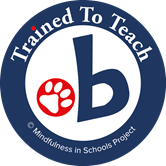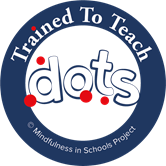Sensory Processing Disorder
What is Sensory Processing Disorder?
Sensory Processing Disorder (SPD) is a condition where the brain has trouble receiving and responding to information that comes in through the senses. This can result in either an overreaction or underreaction to sensory stimuli such as sounds, lights, textures, and movements. Children with SPD might find it difficult to process and act upon information received through their senses, which can create challenges in performing everyday tasks.
We have many different senses. The most well-known are the five traditional senses of sight, smell, hearing, taste and touch. In addition, we have 3 significant internal senses.
Proprioception
Awareness of pressure and force on your body, and knowing where your body is in space/its location. Differences with proprioceptive processing mean you might bump into things or feel the need to chew or bite down on toys or clothing. You also might need to keep moving about even when others around you are sitting still.
Vestibular
Awareness of balance and movement. If you have a high threshold you may need to rock, spin or swing lots more than other people. If you have a low threshold you might avoid swings and movement altogether!
Interoception
Awareness and understanding of what’s going on inside our bodies, such as how we feel hunger, pain, food on our face after a meal, needing the toilet, or whether we are hot and cold.
Balancing sensory systems in the noisy, busy, and highly stimulating neurotypical world can be extremely challenging for our neurodivergent children and young people. Some children and young people might need more sensory input (hypo-sensitive), while others might need less (hyper-sensitive) to feel comfortable. These sensory processing needs can vary within the same person throughout the day, week, or month, depending on their environment and their emotional and physical health.
These internal and external factors can quickly overwhelm a person's sensory processing, leading to 'sensory overload.' This can make it difficult to carry out daily routines and activities.
This video helps us understand how a neurodivergent child might experience an everyday experience such as visiting a shopping centre.
Prevalence of Sensory Processing Disorder
Sensory Processing Disorder is relatively common, though exact prevalence rates are difficult to determine due to overlapping symptoms with other conditions. Research suggests that as many as 5-16% of school-aged children may experience significant sensory processing issues. Awareness of SPD is increasing, leading to better identification and support for affected individuals.
Advice
1. Seek Professional Assessment:
If you suspect your child has SPD, speak to Georgina Spoor, SENCO to seek a professional assessment from an occupational therapist. Early identification can help in accessing appropriate interventions and support.
2. Educate Yourself and Others:
Educate yourself about SPD and share this knowledge with family members, teachers, and caregivers. Understanding SPD can help create a supportive environment for your child both at home and at school.
3. Reduce demands
Reduce any unnecessary demands on the individual where you can, e.g. keep it to things they really need to do, particularly in challenging moments. This can help reduce anxiety.
4. Adapt the environment
Lots of sensory needs can be accommodated for with a little preparation at both home for us in school. Labels can be cut out of clothes; Lights can be dimmed, coloured or used differently throughout the day. Educate U offers low-arousal distraction-free, uncluttered areas to work for children in classrooms.
5. Use accessories
Ear defenders are now widely available and can reduce noise to a bearable level for sensitive ears. Fiddle toys help keep fingers busy! Our Occupational Therapist Assistant can support with other equipment needs such as wobble cushions to sit on, weighted cushions or blankets, or safe chewable toys.
6. Clear start and end
Have a clear beginning and end for sensory tasks that can’t be avoided. For example, use a sand timer for teeth brushing or tell your child the noise will have finished by the time you’ve counted to ten or sung a song.
7. Sensory routine
A sensory routine is where specific activities are routinely put into place each day to proactively meet the individual’s sensory interests and needs. For example, starting the day with some soft coloured lighting to wake up to; having a smelly toy to smell on the journey to school each day; doing a physical activity that includes a lot of jumping for 5 minutes straight after school; ending the day with a warm bath and lots of time to play with water.
8. Sensory based sensory audit
If this is required within your child’s EHCP, a school based sensory audit will be completed by the SENCO in school or a full sensory profile can be completed by the Occupational Therapist.
9. Sensory circuits
Sensory circuits can significantly help keep an individual’s overall anxiety and dysregulation levels down.
10. Plan ahead and prepare
It can help to plan ahead and adjust your routine/activities before hand. For example:
· If you know your child doesn’t like noisy, busy supermarkets, choose to go earlier when it is quieter, or find out if and when your shop has a designated quiet time. Alternatively, go alone, if and when you can.
· Plan your trips out and incorporate lots of movement breaks, or squeeze in a trip to a park or playground when you can – it doesn’t have to be for long.
· Talk to your child about what they might experience beforehand. Can we change anything to help? E.g., if you are going to a birthday party where there are likely triggers e.g., balloons or sudden singing, perhaps speak to the parents beforehand about whether balloons could be avoided or kept in one room? Could you take some sensory toys and/or ear defenders?










